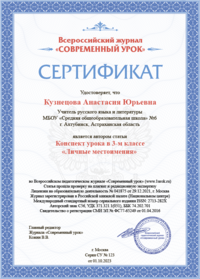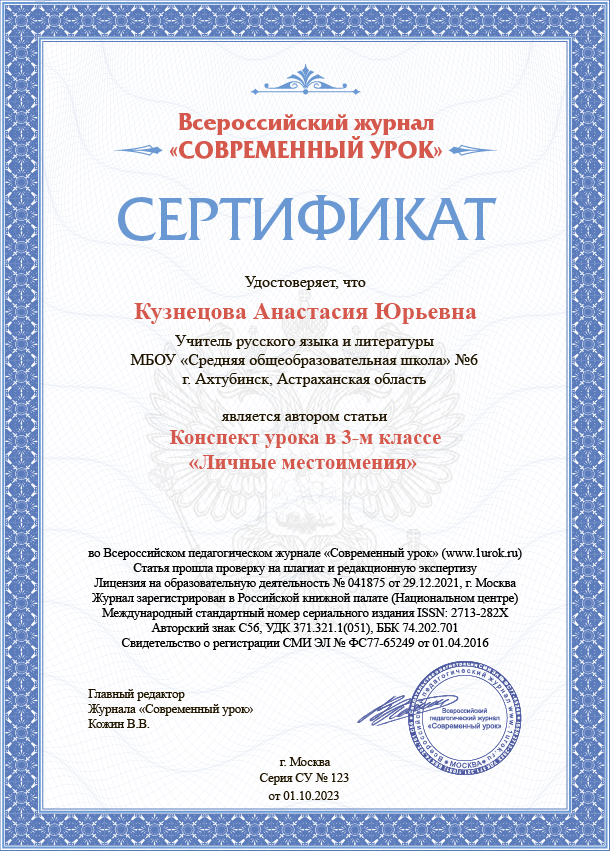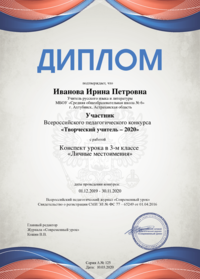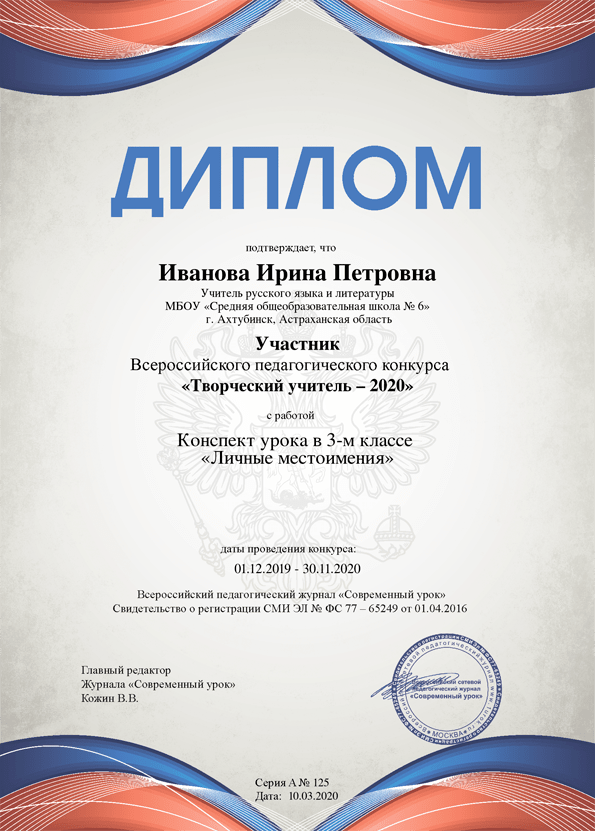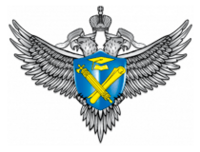Урок-конференция «Мой родной город»
Автор: Иванова Светлана Евгеньевна
Организация: ГБОУ ЛНР «Краснодонская городская гимназия»
Населенный пункт: ЛНР, г. Краснодон
Класс: 10
Тип урока: урок-конференция
Цели и задачи:
Учебныe: способствовать формированию навыков коммуникативной культуры; развитие культуры устных выступлений; совершенствование умения находить информацию, выделять и использовать.
Развивающиe:. развитие потребности и способности к сотрудничеству при работе в группе; развитие познавательного интереса учащихся и творческих способностей, умений планировать своё предстоящее выступление по предложенной ситуации.
Воспитательные: воспитывать чувство патриотизма к своему городу;
формировать ценностное отношения к историческому прошлому и настоящему своего края и чувства гордости за свою малую Родину;
Оснащение урока: раздаточный материал, компьютер, проектор, электронная презентация, книжная выставка.
Форма урока: урок-конференция.
Используемый метод: ролевая игра.
Тип урока: обобщение и закрепление изученного материала.
Ход урока.
Introduction
T: Today we are going to have a lesson devoted to our native town. As you know Krasnodon has a glorious history and many historical places. A great number of tourists from different parts of our country and abroad visit our town.
I hope you’ll agree that it would be a good idea to have a group of volunteers who are ready to give tours about our town.
I invite you to take part in the Conference “Welcome to Krasnodon”.
Main part
Secretary: Good morning, ladies and gentlemen! Welcome to our conference. I am extremely pleased to meet you here. We gather together for discussing the following question. Can we provide tourists with volunteer guides? We are going to exchange experience on the problem of presenting foreigners the information about our town, organizing excursions.
The motto of our conference is: I love my town and I want it to be loved by everybody who visits it.
Programme of the Conference “Welcome to Krasnodon”
- Informative section
- Discussion section
- Project work section
Now, let me introduce the experts from the Tourist Center and the museum “Young Guard”.
So, our conference is opened.
(Presentation Microsoft Power “Krasnodon”)
Expert P1:Krasnodon is a town in the Luhansk People's Republic in southwestern Russia. The administrative center of the Krasnodon district.
Krasnodon is located in the southeastern part of the Donets Plateau on the left bank of the River Velyka Kamyanka (“the Great Stone River”), a tributary of the Seversky Donets, 50 km (31 miles) to the southeast of Luhansk.
The town has an area of 77.33sq. km (30 sq.mi.) and the population of about 45,000 inhabitants.
Expert P2: The town was founded in 1914 along the banks of the Velyka Kamyanka and was called the settlement of Sorokino ("Magpie Village") According to local legend, the Sorokin farm was founded at the end of the XVIII century by the Don Cossack of the Gundorovskaya stanitsa, nicknamed Soroka or surnamed Sorokin — from whose generic name the name of the village appeared..
In 1938 Krasnodon was renamed into Krasnodon. Krasnodon means “the Beautiful Don City” in English. The Russian word "krasny" can be seen in many city names, but it does not have its literal meaning as “red” in that case, but means "fine" instead because the Russian word "krasny" has a double meaning.
Rich coal deposits were discovered in the area around modern Krasnodon. It soon became one of the centers of the coal mining industry of the Donbass region.
Expert P3: During the Second World War Krasnodon was occupied by Nazi Germany from July 20, 1942 to February 14, 1943. In that period, between October 1942 and January 1943, the anti-nazi Komsomol organization Young Guard operated in the town.
Many patriotic young people of Krasnodon, members of the YCL (The Young Communist League), united in an underground organization. The youngest member was 14 years old and the oldest one was 21 years old. The young people fought for about half a year against the Nazi invaders.
The 92 members of the underground organization were arrested and murdered by the Nazis in January 1943, only two weeks before the town was liberated by the Soviet Army.
Young guards Ulyana Gromova, Ivan Zemnukhov, Oleg Koshevoy, Sergei Tyulenin, Lyubov Shevtsova, Ivan Turkenic were posthumously awarded the title of Hero of the Soviet Union. 3 participants of the Young Guard were awarded the Order of the Red Banner, 35 — the Order of the Patriotic War I degree, 6 — the Order of the Red Star, 66 — the medal "Partisan of the Patriotic War" I degree.
Expert P4: The heroes feat of the young people became known worldwide owing to the novel of the Soviet writer Alexander Fadeyev “The Young Guard”.
The book was screened and the movie enjoyed great popularity in the Soviet Union.
There are monuments ”The Oath”, “The Sorrow Mother”, “Heroes Alley”, “Young Guard” Square, the memorial complex “The Unsubdued “, “Young Guard” Memorial Museum are built in memory of the Young Guard in Krasnodon.
Expert P 5: Krasnodon - mining town of records and traditions. Among the clearest examples – mamaev movement. Brigade miners M.Y. Mamaia appealed to the miners of Donbass a call to start a daily competition for over-fulfillment of replacement rules each miner at least one ton. Patriotic appeal was taken up not only to coal miners and workers, and all areas of the country's economy.
In different years 11 residents of Krasnodon were awarded the title of Hero of Socialist Labor: M.Y. Mamai, A. Lazyuk, V.I. Ivanchikova, V.A. Dryzhenko, A.Y.Kolesnikov, M.Doroshko etc.
Expert P 6: We are proud of our compatriots. Yuriy Poteyenko-composer and arranger, teacher of the Moscow Conservatory, the author of four operas, symphonies, ballet, oratorio, music to many Russian feature films ("Night Watch", "Night Watch", "Leningrad" "Irony of Fate. Extension", "Carnival Night - 2", "Inhabited Island", etc.) was born, grew up and studied in Molodogvardeysk Krasnodon district. P.Besposchadny poet lived and worked in Krasnodon, a poet O.Holoshenko (Member of the Union of Soviet Writers) began writing poetry in our town. From Krasnodon went to the big science J.G. Lysenko - Academician (Donetsk National University), V.A. Zabrodsky - doctor of economic sciences, professor, academician A.A Luzan. Denis Berinchik, became the world boxing champion in London Olympic Games.
2 Discussion section
Task 1 (Приложение 1)
Secretary: Name some reasons for visiting Krasnodon. There are some phrases on your desks (handout1). Some of them are extra.
- well famous people have ( …) lived here
- a tourist centre
- very special architectural design
- very attractive for tourists
- has a lot of theatres
- World War II Memorial Town
- really interesting things to see
- the main town attraction for years
Adjectives: modern, dynamic, historical, ancient, interesting, attractive, rich, provincial, famous, unique, truthful.
Recommendation: An interesting place to visit is…
I`d recommend visiting…
Task 2.
Secretary:Match the description of some places of interest of Krasnodon to the photos is for Some of them are extra.(Приложение 2).
A Perished Coalminers Memorial
B monument “The Oath”
C “Young Guard” Palace of Culture
D “The Unsubdued” Memorial Complex
E the Great Ancient Wall
F “Young Guard” Memorial Museum
G stele “Sorrow Mother”
H Russian Cossacks museum
I Pilots Memorial
J School #1
K Heroes Alley
- It was erected on September 12, 1954. It depicts five leading Young Guards members during their solemn oath of fighting against the Nazis.
- It is located in Pioneer Street in front of the Coalmining Administration building. It is dedicated to the coalminers who perished during their work at the local coalmines.
- It is located on the eastern outskirts of Krasnodon in the district called Pervomayka ("May Day Village"). It has a lot of old household goods that were used in Russian Cossacks houses, authentic Russian Cossacks' clothes.
- It was built in 1930, twenty-eight Young Guards members studied there. The Gorky monument stands to the right of it entrance.
- It is located on the eastern outskirts of Krasnodon in the settlement called Pervomayka. It looks manmade and looks like a thousand years old. Perhaps there was a fort on the hill and a huge fence around it.
- It was built in 1959 and has been the cultural hub of the town. Concerts, gala meetings, shows and festivals have been held here within the beginning of its existence. The city disco takes place here on weekends. It is famous for its audience hall and its huge chandelier.
- There is Eternal Flame at it, at the back of this memorial you can see an inscription taken from a prison cell after the liberation of the city in February 1943:“Death to German invaders”
- The new building opened on May 6, 1970. For the most fruitful work of the patriotic and internationalist education of youth in 1982 it was awarded the Order of Friendship of the Peoples. Its exposition consists of 12 rooms where the materials about the origin and development of Krasnodon, about the “Young Guard”.
- There are seven busts in this place located downtown. The first one is dedicated to Alexander Fadeyev, a Soviet writer, the author of the famous novel "Young Guards". You can see his words on his bust pedestal:” I wrote about the heroes of Krasnodon with great love and put a lot of my heart's blood into this novel” There are 6 busts of members of the Young Guards who were awarded posthumously with the title of the Hero of the Soviet Union: Ivan Turkenich, Oleg Koshevoy, Uliana Gromova, Ivan Zemnukhov, Lyubov Shevtsova, Sergey Tiulenin.
Key: 1B, 2A, 3H, 4J, 5E, 6C, 7G, 8F, 9K
Secretary: Every guide should know and remember many dates. Do you know the dates connected with the history of our town properly?
- 3. Complete the table. Which historical facts refer to these dates? There are historical facts on your tables. One is extra (Приложение 3)
|
Dates |
Facts |
|
1914 |
|
|
1938 |
|
|
1943 |
|
|
1954 |
|
|
1970 |
|
|
1984 |
|
A The museum “Young Guards” was opened in a new building
B The settlement Sorokino was founded
C The monument “Sorrow Mother” was opened
D Sorokino was renamed into Krasnodon
E the anti-nazi organization Young Guard was formed
F Krasnodon was liberated from the Nazis
G The monument “The Oath” was erected
|
Dates |
Facts |
|
1914 |
C)The settlement Sorokino was founded |
|
1938 |
D) Sorokino was renamed into Krasnodon |
|
1943 |
F) Krasnodon was liberated from the Nazis |
|
1954 |
B) The monument “Oath” was erected |
|
1970 |
F)The museum “Young Guards” was opened in a new building |
|
1984 |
E the anti-nazi organization Young Guard was formed |
Task 4.
Secretary: The tourists and guests may ask you a lot of questions and you should know how to answer them.
Now let’s organize “Blitz-Info”. Group to my left give the answers to the questions of group to my right.
Possible questions
Where is Krasnodon situated?
When was it founded?
What is the symbol of your town?
What is the emblem of Krasnodon?
What is Krasnodon famous for?
What significance has the name of your town?
Has Krasnodon got many old fine buildings?
What famous people have lived in your town?
Is Krasnodon a tourist centre?
When was Krasnodon formed as a town?
What is the most ancient and mysterious monument of the past?
3Project work section
Secretary: Every year a lot of tourists from different parts of Russia and abroad come to our town. Now I’ll give you the task to make a Programme of Tour about Krasnodon.
(3groups of 5 pupils)

 БЕСПЛАТНЫЕ семинары
БЕСПЛАТНЫЕ семинары